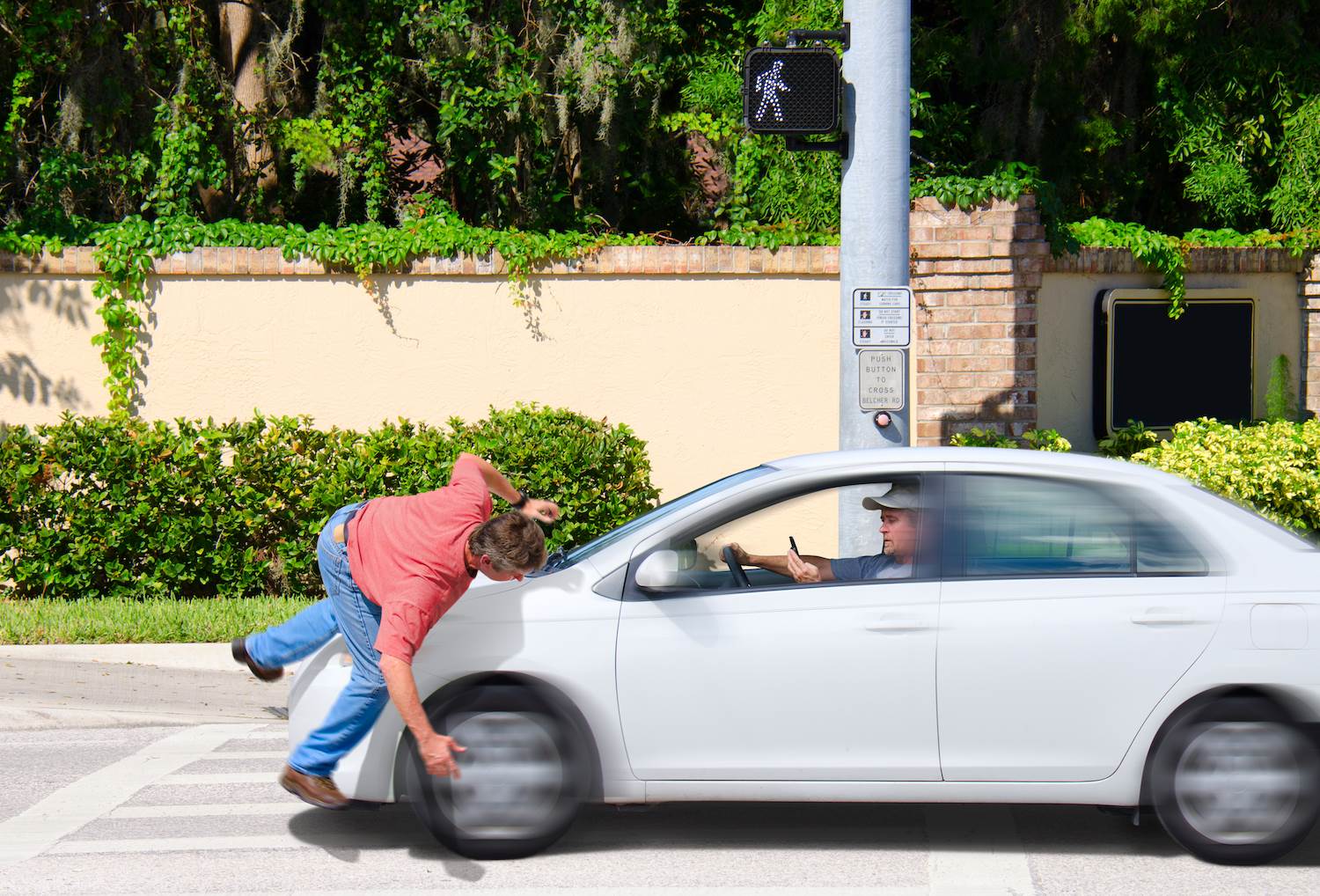Sped up causes the laws of physical science to turn out to be increasingly more imperative to the driver. These laws, albeit not authorized by a cop or composed by a law creating body, are totally restricting on all drivers, and nobody can loosen up their impact. The laws of material science control every article that moves. The specific laws which apply to driving cover regions like grinding, radiating power and latency, effect, and gravity. You ought to consistently recall that these laws apply to city driving just as to driving on the parkway, in light of the fact that their importance increments proportionately with the speed at which you are voyaging. Be that as it may, this article on thruway driving would appear to be the best spot to examine their significance.
Appropriate sight requires adequate light and time for an image to force itself on the retina of the eye, be transferred to the cerebrum, and subsequently trigger a response by the driver. This implies that traffic signs, signs, and asphalt markings become progressively significant when driving at higher rates. These give the driver preemptive guidance of any bends, slopes, convergences, or rail route intersections that might be ahead, just as planned moves by different drivers. A driver should figure out how to perceive all signs and signals in a split second, for at higher velocities the ideal opportunity for acknowledgment and response becomes more limited and more limited. To work with acknowledgment, signs and signals all through the United States are normalized by shape and shading and can mirror light to be seen around evening time. Keep in mind, it sets aside effort to notice a sign, sign, or condition, and afterward respond to it. Response time for a given driver is genuinely consistent, however the distance went in this time is straightforwardly identified with speed. Along these lines, halting distances and distances needed for shifty activity become more prominent as speed is expanded.
Grating
Erosion is the power which goes against the movement of one surface over another, and is the means through which a vehicle might move in an orderly fashion, or may turn or stop. This power is applied completely through four little rubbing regions, otherwise called, tires. On the off chance that we expect that the normal response time is 0.75 seconds than presence of mind discloses to us that the quicker the vehicle is voyaging, the more noteworthy the distance it will take to stop. The distinction in preventing distance from 40 miles each hour to 70 miles each hour is around 3.5 occasions more prominent. This implies that on the off chance that you can stop inside 100 feet at 40 miles each hour, you will require 350 feet of room to quit going at 70 miles each hour.
These conditions just happen part of the time, nonetheless: should the power of erosion be diminished by ice, snow, downpour, oil, mud, free rock, a harsh surface, or helpless tires, then, at that point halting distances will increment radically and equivocal moves will turn out to be substantially more troublesome, or even outlandish. Since halting distance increments more quickly than speed, permit a more prominent distance between your vehicle and the vehicle in front as your speed increments.
Latency and Centrifugal Force
On the off chance that whenever the frictional power, or footing, between the four little spaces of the tire and street surface are lost, control is lost too, and either of the accompanying actual powers might decide the circumstance: idleness, the propensity of a moving body to continue to move in an orderly fashion except if an external power acts to adjust its course of movement; and radial power, the inclination of a moving body turning about a middle to take off from that middle. Outward power can be exhibited by setting a load on the finish of a string and swinging it in a roundabout movement. In the event that the string is delivery or breaks, the weight will leave the round way and proceed in an orderly fashion.
Clearly, a comparable impact can happen to a turning vehicle. A vehicle cruising all over a bend should beat the radial power to make the turn. In the event that the diffusive power is more noteworthy than the erosion between the tires and the street, the vehicle can not turn, yet will slip off the interstate. The central issue is that the grating speeds up, however the radial power increments much more quickly. In this manner, the quicker your speed, or the more honed the turn, the more noteworthy is the possibility that you will not be able to get around securely. On the off chance that you recall this rule, you will understand that you should dial back prior to entering a bend, particularly if the street is somewhat dangerous
Brakes ought to never be applied in the wake of entering a bend, as this tends to lessen the erosion between the haggles street. Keep in mind, contact empowers you to move your vehicle, control it, and stop it. At the point when you consider that for each tire the region contacting the street surface is about equivalent to the size of your hand, it is justifiable that many variables can cause loss of rubbing, and resultant loss of control. The more noteworthy the speed, the more prominent the chance this might occur – and the more noteworthy the outcomes. Speed should consistently be changed in accordance with suit street conditions.
Just as the speed of the vehicle, another factor deciding if you will actually want to make a turn securely is the point at which the street is banked through the bend. The most straightforward is a banked turn (like a race track); the second, a level street surface; and the third, a delegated surface. The level street surface is hazardous at high velocity, and in correlation, in a turn, the delegated surface must be haggled at low rates on the grounds that the vehicle is shifted against the heading of the bend. On entering sharp bends, there is generally a warning pace sign posted, revealing to you the speed at which the bend might be securely taken. One who disregards these signs is for sure an extremely absurd driver.
Active Energy and the Force of Impact
On the off chance that control of a vehicle is lost, the standard outcome is crash, either with another vehicle or with a decent item. The immeasurably significant variable in the present circumstance is the power of effect. The power of effect itself is an element of the speed and the heaviness of the vehicle. In the event that you twofold the speed of a vehicle before a crash, the power of effect is multiple times as fantastic. In the event that you triple the speed of the vehicle before crash, the power of effect is increased multiple times! Weight additionally has a section to play here; if the heaviness of the vehicle duplicates, the power of effect pairs as well. The complete consequence of multiplying the speed and the heaviness of the vehicle is increment the power of effect multiple times. Subsequently, any crash would fundamentally be multiple times as harming. As a result, the effect of hitting a strong article at 30 miles each hour resembles driving off a three story building.
Roadway engineers utilize a few methods to lessen the power of effect in instances of unavoidable contact with encompassing articles. Smooth metal gatekeeper rails permit a vehicle to look off instead of hit firmly. Wide street shoulders, liberated from deterrents like trees, ducts, and extension projections, help to lessen the danger. Where light and sign norms are fundamental, these posts are intended to sheer or sever effectively on contact. The most ideal approach to ensure that the power of effect doesn’t follow up on your vehicle is to drive consistently in a way which will stay away from impact with all items!
The Force of Gravity
Gravity – the power which draws in objects downwards towards the focal point of the earth – will make vehicles lose speed going up slopes, along these lines diminishing their halting distances; and to speed up going down slopes, accordingly expanding their halting distances. A decent driver will cut his speed while dropping a slope; on steep grades, he should place his stuff selector into low, so the motor of the vehicle will go about as a brake. Slopes are expected driving perils for different reasons moreover. They limit perceivability; the driver ought not pass on or moving toward a slope, regardless of how leisurely the vehicles in front are moving, except if there is a passing path. At the peak of a slope, the driver should be ready for moving toward vehicles not in their appropriate path, or for deterrents in the street ahead, for example, a vehicle halted while holding on to make a left turn. Recollect that you should have the option to stop your vehicle somewhere out there you can see ahead one or the other day or night.



